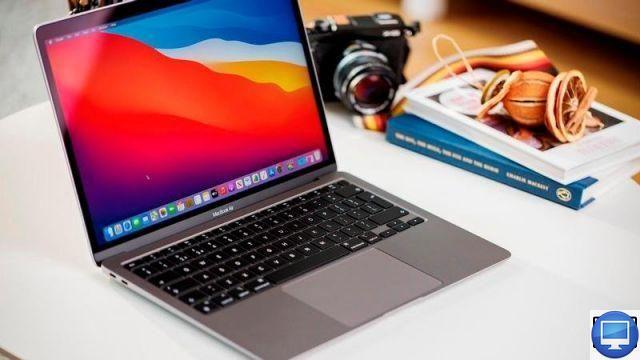
Comparison: MacBook Pro vs. MacBook Air
Apple MacBook Pro 14 inch, M1 Pro (2021) vs MacBook Air vs MacBook Pro 16 inch
Apple currently sells two lines of laptops: the MacBook Pro (which currently comes in 13, 14 and 16 inches) and the MacBook Air (13 inches). The 14-inch and 16-inch MacBook Pro models were updated in October 2021, while the smaller 13-inch MacBook Pro and Air were released in November 2020.
With four models to choose from, there are some very noticeable differences between the MacBook Air and Pro.
In this article, we explain the differences between the MacBook Air and the Pro. We compare the main areas where MacBooks clash, the pros and cons of each, and the factors to consider before making a buying decision.
Our best MacBook buying guide might also be helpful.
To understand what separates the Intel chip from Apple's M1 chip, we recommend this comparison.
Design, dimensions and weight
When it was launched in 2008, the MacBook Air was the lightest laptop on the market. Over the years, the weight of the MacBook Pro has also decreased, so the difference is much less than it was.
Today, the 2020 MacBook Air weighs only a few grams less than the 13-inch MacBook Pro, respectively 1,29 kg versus 1,4 kg.
The 14 2021-inch MacBook Pro is only marginally heavier (1,6 kg), while the 16 2021-inch Pro weighs 2,1 kg.
This measure is not the only one to take into account. The space your laptop will take up in your bag or on your desk will also be a determining factor in your decision.
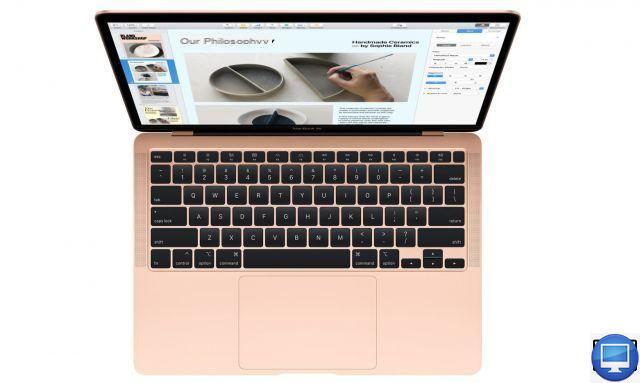
The MacBook Air measures 30,41 x 21,24 cm, and is 1,61 cm thick, and 0,41 cm at its narrowest point. The 13-inch MacBook Pro has the same measurements (304,1 x 212,4 mm), however it is 15,6 mm thick.
The 14-inch MacBook Pro has an all-new design for 2021, it measures 31,26 x 22,12 cm and is 1,55 cm thick. It's actually a bit thinner than the 13-inch MacBook Pro, although it's a bit longer and wider.
The 16-inch MacBook Pro is the largest, as you might expect, with dimensions of 35,57 x 24,81 cm and a thickness of 1,68 cm, weighing 2,1 kg.
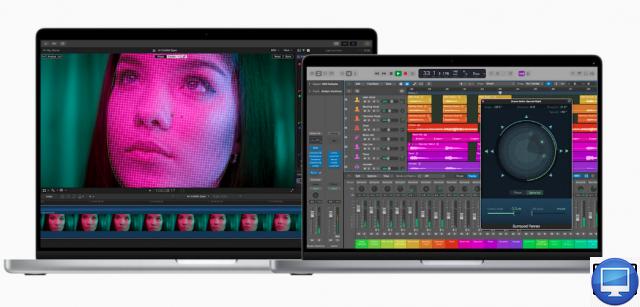
All of these Apple laptops feature Touch ID and the Force Touch trackpad, but now only the 13-inch MacBook Pro has the Touch Bar (this feature has proven unpopular with professionals for whom the 14- and 15-inch MacBook Pro models inches are designed). This multi-touch bar replaces the F function keys, and it can provide contextual controls depending on the open application.
However, many professionals find it impractical, preferring the physical F keys. The usefulness of the Touch Bar obviously depends on your personal preferences and the software you use.
The other area where the Air and the Pro stand out from each other is the choice of colors. You can choose between Silver, Space Gray and Gold for the MacBook Air, but only between Space Gray and Silver for the MacBook Pro.
All MacBooks are equipped with Apple's Magic Keyboard, which has a scissor mechanism for better key stability, it replaces the butterfly.
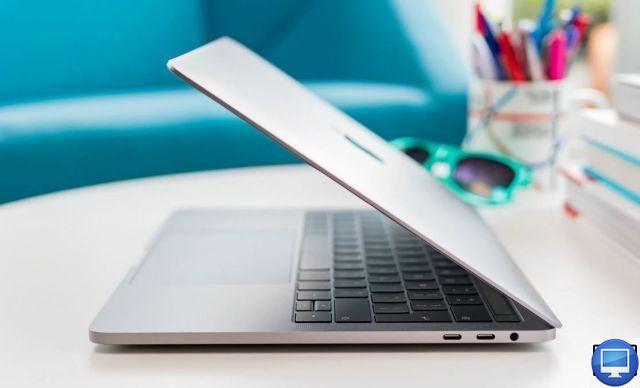
Processor
The main difference between these MacBooks is the processors. However, it is no longer about the Intel vs M1 distinction since Apple has now updated all of its laptops to run on its own processors.
Today, you have the choice between the M1, the M1 Pro and the M1 Max. We'll go over the differences below so you can figure out which processor is right for you.
M1
The November 2020 MacBook Air and Pro 13 from the same period run Apple's M1 processors.
The M1 has an eight-core CPU, four of which are high-performance cores; the other 4 of high efficiency. That's one of the reasons the M1 performs so well: when the high-efficiency CPU cores are busy backing up to iCloud or syncing photos, the high-performance cores remain available for more intensive tasks.
As a result, you shouldn't see the Mac slowing down due to background processes, for example.
When Apple introduced the M1 chip in November 2020, it made big claims saying it was the "world's fastest processor core" with "the world's best processor performance per watt" as well as "many powerful technologies" and "enhanced performance and efficiency". Apple also said the M1 offers up to 3,5 times faster CPU performance than previous generation Macs.
Our tests of the M1 Macs prove that Apple's claims are true.
M1 Pro
The M1 was already of good quality, then, in November 2021, the M1 Pro landed on the new 14- and 16-inch MacBook Pros. Generally speaking, the M1 Pro is equipped with 10 cores, however, the entry-level model has only 8 cores.
The 10-core version is split into eight high-performance and two high-efficiency cores. Apple claims that compared to the latest 8-core notebook PC chip, the M1 Pro has up to 1,7 times better CPU performance, and achieves peak PC chip performance using up to 70 % less energy.
Max M1
The M1 Max is available for the 14 or 16 inch MacBook Pro, its processor is the same as that of the M1 Pro. It is made up of 10 cores, including eight high-performance cores and two high-efficiency cores.
The real difference between the M1 Pro and the M1 Max is in the graphics cores.
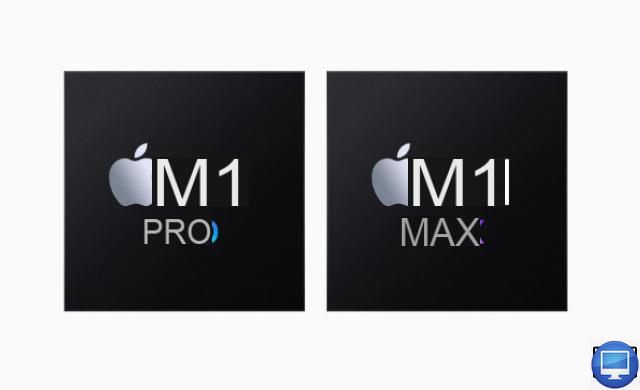
Intel
We will briefly mention Intel because Apple no longer sells MacBooks with an Intel processor. However, you can find some on Apple's Refurbished Store or a third-party retailer. Indeed, most of the best MacBook deals are for older Intel-based models. Until October 2021, there were two 13 2,0 GHz 2020-inch MacBook Pro models and the 16-inch MacBook Pro also offered Intel processors.
You'll probably prefer to stick with Intel if you're using software that can't run on the M1, M1 Pro or M1 Max for example. Although thanks to Apple's built-in Rosetta software, which takes care of translating the code so it can run on ARM chips, that shouldn't really be a problem.
Which processor for which MacBook?
MacBook Air :
13-inch MacBook Pro:
- M1 chip with 8-core CPU and 8-core GPU
14-inch MacBook Pro:
- M1 Pro chip with 8-core CPU and 14-core GPU
- M1 Pro chip with 10-core CPU and 16-core GPU
- M1 Max chip with 10 core CPU and 24 or 32 core GPU (on order)
16-inch MacBook Pro:
- M1 Pro chip with 10-core CPU and 16-core GPU
- M1 Pro chip with 10-core CPU and 16-core GPU
- M1 Max chip with 10 core CPU and 24 or 32 core GPU (on order)
graphics processor
As you can see from the specs above, the difference between the M1, M1 Pro, and M1 Max is more than the number of CPU cores available. There are several options when it comes to the number of GPU cores and the number of graphics cores will be a key part of any decision about which model is best for your needs.
GPU options are determined by the Apple chip you choose, so as above we'll go over the options for the M1, M1 Pro and M1 Max.
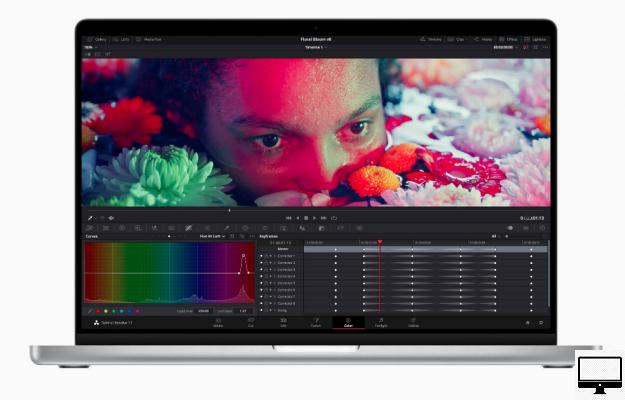
M1
We will start with the different GPUs accompanying the M1 chip. The entry-level MacBook Air has a 7-core GPU and the other MacBook Air has an 8-core GPU. The lack of the 8th GPU core holds back the 7-core model, so if you think you need that extra core, you can look to the more expensive Air, which also offers more storage. However, the MacBook Pro, which has an 8-core GPU as standard, might be a better alternative.
The reason the MacBook Pro M1 is better suited for graphics-intensive operations than the MacBook Air M1 is that it also includes a fan for cooling. The MacBook Air lends itself perfectly for standard use because it is fanless.
M1 Pro
The 14-inch MacBook Pro with M1 Pro processor is offered with a 14-core GPU or a 16-core GPU. However, there is a fairly significant price difference (500 €).
Should you pay that extra amount to get two more graphics cores? Our gut tells us that there must be a big upside to the extra cores to justify such a price.
Max M1
One of the biggest distinctions between the M1 Max and the M1 Pro is the number of graphics cores. The other would be the fact that the M1 Max is the only chip to support 64GB of RAM, but we talk about that later in this article.
The standard 14-inch MacBook Pro doesn't come with the M1 Max, but you can customize it by adding the M1 Max chip and 24-core GPU or the 1-core M32 Max chip.
Apple offers a 16-inch MacBook Pro with M1 Max, and like the 14-inch MacBook Pro there's the Max alternative with 24-core GPU or an M1 Max with 32-core GPU.
Intel
We'll quickly mention the now-discontinued Intel-powered MacBook Pro models. How do they compare to Apple's M1 models? In general, discrete graphics cards are considered far superior to integrated graphics cards. So you might think the discrete ones of the older 16-inch MacBook Pro are superior.
With the M1, Apple said its solution was "the world's fastest integrated graphics solution in a personal computer" and was twice as fast as PC equivalents. Our tests showed that there was a significant performance gap between Apple's GPU and Intel's offerings.
Now that the M1 Pro and M1 Max are here, AMD graphics cards may be left behind. One of the reasons these are very likely to be real graphics boosts is that this is due to Apple's use of tile-based deferred rendering technology, which we're talking about here: Apple Silicon graphics.
If you need a little more power with an Intel Mac, know that you can connect an eGPU via Thunderbolt. However, note that the Mac M1, M1 Pro and M1 Max are not compatible with an external graphics processor.
RAM (Unified Memory)
All MacBook M1, Pro or Air, have 8 GB of RAM in their basic configuration. It is possible to upgrade to 16 GB during your purchase.
The M1 Pro comes with 16GB of unified memory and can be upgraded to 32GB. The M1 Max also comes with 16GB of unified memory but can be upgraded to 64GB.
This RAM, which Apple calls Unified Memory, is part of the M1, M1 Pro or M1 Max chip, and is therefore accessible to both the CPU and the GPU.
Apple talks about Unified Memory Architecture, or UMA, it has advantages, so the 8GB RAM of the M1 models doesn't really compare to the 8GB or even 16GB RAM that you find in an Intel Mac.
MacBook M1s can be configured to get 16GB of RAM, while the M1 Pro can be customized with 32GB of RAM and the M1 Max 64GB.
Warehousing
Both the Air and the 13-inch Pro have 256 GB of storage, for their base version, a second model has 512 GB. You can add a larger SSD when purchasing, however the M1 models are limited to 2 TB.
The 14-inch MacBook Pro and the 16-inch MacBook Pro are available in standard storage of 512 GB or 1 TB. In custom, it can go up to 8 TB.
Our read and write tests show that the MacBook Air M1 outperforms the early 2020 MacBook Air:
Battery
When it comes to battery life, the Mac M1s really stand out, and we're sure the same goes for the M1 Pro and M1 Max.
According to Apple, the MacBook Air M1 has an 18 hour battery life and the MacBook Pro M1 has an amazing 20 hour battery life. The 14-inch MacBook Pro offers up to 17 hours and the 16-inch MacBook Pro 22 hours.
The 10 hours of the MacBook Pro at 2,0 GHz, which is no longer sold, pale in comparison, however these 10 hours are enough for a day's work.
Battery life is high thanks to the M1, M1 Pro and M1 Mac chips which, together with the improved power efficiency of macOS, intelligently distributes the tasks between the performance and efficiency cores. Everything is optimized.
This suggests that if battery life is most important to you, then your best bet would be the 16-inch MacBook Pro, but the 13-inch MacBook Pro isn't far behind at 20 hours, so you don't don't have to spend a fortune.
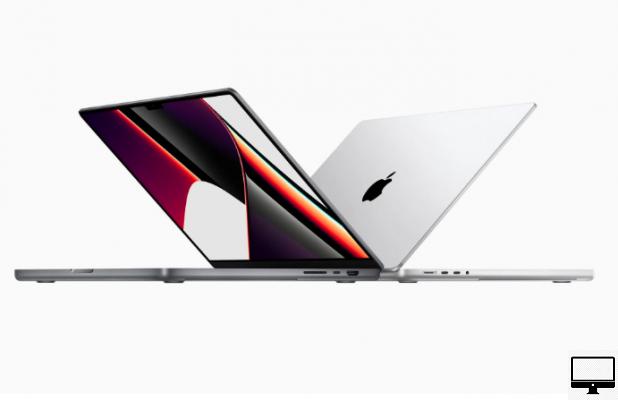
Screens
Four different sizes are to be considered:
- Two 13-inch (13,3-inch diagonal) Retina displays.
- A 14-inch (14,2-inch diagonal) Liquid Retina XDR display
- A 16-inch (16,2-inch diagonal) Liquid Retina XDR display.
The display was previously an area where the Air and Pro were very different, with the Air not getting Retina technology until 2018. It then got True Tone in 2019, bringing it in line with the Pro. However, the MacBook Air's screen isn't as bright as the MacBook Pro's, 500 nits for the latter versus 400 for the Air.
The screens of the 2021 MacBook Pros are superior; Liquid Retina XDRs have extreme dynamic range. Apple says it's capable of 1 nits standard brightness, 000 nits peak brightness, and 1:600 contrast ratio for deeper blacks and more vivid colors .
These new displays bring ProMotion to the Mac, for a 120Hz refresh rate, which means it can refresh frames 120 times per second, but it can also vary the refresh rate to a much lower level when it doesn't. is not necessary. Which is more energy efficient and allows less drain on the battery.
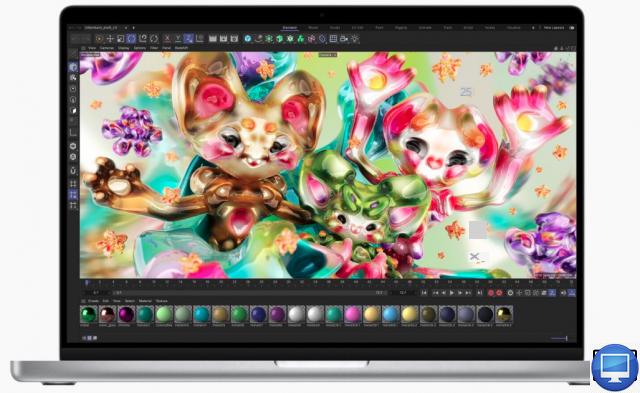
As you might expect, MacBooks have their own screen resolution:
- 16-inch MacBook Pro: 3 x 456 pixels, a total of 2 million pixels.
- 14-inch MacBook Pro: 3 x 024 pixels, a total of 1 million pixels.
- 13-inch MacBook Pro: 2 x 560 pixels, a total of 1 million pixels.
- 13-inch MacBook Air: 2 x 560 pixels, a total of 1 million pixels.
By comparison, the 16 2019-inch MacBook Pro's screen was 3 x 072 pixels. Interestingly, there are more pixels on the 1 920-inch MacBook Pro than on the 14 2021-inch MacBook Pro.
Note that the 16-inch MacBook Pro is still not 4K; there are non-Apple displays that offer this, but Apple isn't there yet, maybe it will show on the next iMac. Just as the firm at Apple still does not offer touch screens for its MacBooks.
The notch...
The notch, a familiar feature for iPhone users, it houses the components of Face ID and the selfie sensor, has been integrated into the screen of the new Pros. Here it houses the FaceTime camera which overlaps the screen, so it's a bit different.
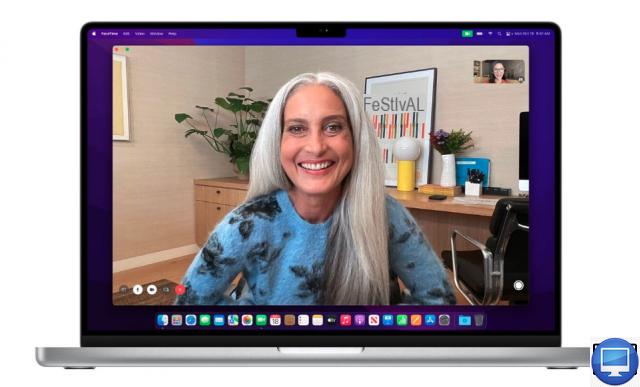
The downside of the notch should be easy to conceal once the appearance of app menus begins to incorporate the dark area of the notch. You will probably start to see a black band across the top of your screen.
Ports and Devices
Over the years, we've gotten the impression that Apple has made it a mission to strip ports from Macs in order to increasingly refine their design. That's been a downside for many, though usually you can just plug in an adapter or dock to add the ports you're missing.
So the fact that the MacBook Air and MacBook Pro M1 both come with two USB 4 ports, also supporting Thunderbolt 3 is limiting, but not impossible to work with.
However, Apple's strategy with the 14 16-inch MacBook Pro and 2021-inch MacBook Pro is different. Apple has listened to the needs of its target group and made a number of highly sought-after ports available.
In summary, the 14-inch MacBook Pro and the 16-inch MacBook Pro feature:
- Three Thunderbolt 4 (USB-C) ports
- One HDMI port
- SDXC card slot
Note that USB 4 should be able to offer a speed of 40 Gb / s, which already offers Thunderbolt 3, USB-C provides a speed of 10 to 20 Gb / s.
So the question is how many ports do you really need? If you need more ports, you can add a USB hub.
All MacBooks have a headphone jack.
Price
In truth, the first point that differentiates a MacBook Air from a 13-inch MacBook Pro is their cost.
MacBook Air price
The MacBook Air comes in two default configurations:
- M1 with 8-core CPU and 7-core GPU, 8GB RAM, 256GB SSD: € 1.
- M1 with 8-core CPU and 8-core GPU, 8GB RAM, 512GB SSD: € 1.
13-inch MacBook Pro prices
There are now two versions of the 13-inch MacBook Pro sold by Apple:
- M1 with 8-core CPU and 8-core GPU, 8GB RAM, 256GB SSD: € 1.
- M1 with 8-core CPU and 8-core GPU, 8GB RAM, 512GB SSD: € 1.
You can also choose its 16 GB RAM version at the time of purchase, and opt for a more generous SSD.
14-inch MacBook Pro prices
The 14 2021-inch MacBook Pro is available in the following versions:
- M1 Pro with 8-core CPU and 14-core GPU, 16GB RAM, 512GB SSD: €2.
- M1 Pro with 10-core CPU and 16-core GPU, 16GB RAM, 1TB SSD: €2.
You can configure the 14-inch MacBook Pro with an M1 Max chip or more RAM, etc.
16-inch MacBook Pro prices
If you are tempted by a larger screen and more power, then you have the choice between 3 models of 16-inch MacBook Pro:
- M1 Pro with 10-core CPU and 16-core GPU, 16GB RAM, 512GB SSD: € 2.
- M1 Pro with 10-core CPU and 16-core GPU, 16GB RAM, 1TB SSD: €2.
- M1 Max with 10-core CPU and 32-core GPU, 32GB RAM, 1TB SSD: €3.
We recommend checking out Apple's Refurbished Store to see if you can get a discounted MacBook, particularly if you're looking for an Intel model, although occasionally we've seen Apple sell M1 models for less via this shop.
Conclusion
If price is your most important consideration, then the MacBook Air M1 is the best for you. If, on the contrary, good battery life is essential to you, then the 16-inch MacBook Pro would be the best choice, but the 13-inch MacBook Pro is not far behind. When it comes to portability, the Air wins, but narrowly.
For maximum power, then the Pro M1 undoubtedly outperforms the Air, mainly because it has a fan, which allows you to push a bit.
But if you really need the ultimate, then we strongly suggest the 14-inch MacBook Pro and 16-inch MacBook Pro, which have more graphics cores and support more RAM than the others. Let's not forget the wide choice of ports offered.
They're all great MacBooks. Your decision will mainly depend on your budget. If the latter is rather limited then go for the MacBook Air, but by adding 50 €, the 13-inch MacBook Pro will offer you more.
If you need a very powerful Mac, it will cost you even more than before, even the entry-level 14-inch MacBook Pro now costs more than its predecessor.


























